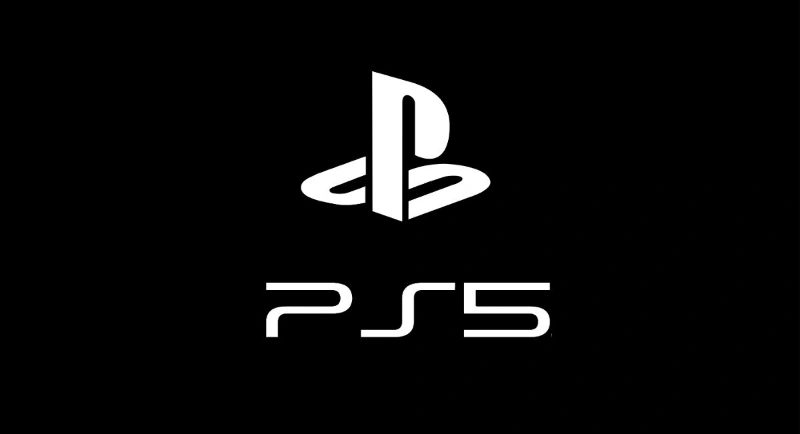1. Introduction
The PlayStation 5 (PS5) revolutionized console gaming with its custom AMD GPU, and the upcoming PS5 Pro promises another giant leap. Gamers everywhere debate how these consoles compare to PC graphics cards – is a $500 PS5 really as powerful as a $1,000 gaming rig? Today, we’ll break down the PS5 and PS5 Pro GPUs, reveal their closest PC equivalents, and explore the real-world implications of their designs.
But here’s the twist: while consoles push gaming boundaries, enterprises face far bigger GPU challenges. Managing massive, costly AI GPU clusters requires industrial-grade hardware and intelligent orchestration – a problem tools like WhaleFlux are built to solve. Let’s dive in!
2. PS5 GPU: Specs and PC Equivalents
PS5 GPU Specs
At its heart, the PS5 uses a custom AMD RDNA 2 architecture GPU clocked at up to 2.23 GHz, delivering 10.28 TFLOPS of raw power. With 36 Compute Units (CUs), it supports hardware-accelerated ray tracing and targets 4K gaming at 30-60 FPS. Games like Spider-Man: Miles Moralesshowcase its ability to blend high-resolution textures with smooth performance.
PC GPU Equivalents
In raw rasterization (traditional rendering), the PS5 GPU performs close to an AMD Radeon RX 5700 XT or NVIDIA RTX 2070 Super. In well-optimized titles like Assassin’s Creed Valhalla, it nearly matches the RTX 2080. But there’s a catch:
Limitations
- Ray Tracing: Without AI upscaling (like DLSS), its ray tracing performance lags, closer to an RTX 2060 Super.
- Optimization Reliance: The PS5 leans heavily on fixed hardware and software tricks (e.g., dynamic resolution scaling) to hit performance targets. A similarly specced PC GPU often struggles without these custom optimizations.
3. PS5 Pro GPU: Upgrades and Real-World Performance
Key Specs
The PS5 Pro isn’t just iterative – it’s transformative:
- 16.7 TFLOPS (+62% over PS5)
- Hybrid RDNA 3/4 architecture with 60 CUs
- Extra 2GB DDR5 RAM for system tasks and SSD caching
PC GPU Equivalents
In rasterization, expect performance near an AMD RX 7700 XT or RX 6800. But thanks to its upgraded ray tracing cores (borrowed from RDNA 4), it outperforms the RX 7700 XT in ray-traced games – a rare console advantage.
New Tech
- PSSR (PlayStation Spectral Super Resolution): Sony’s AI-powered upscaler targets 4K/120FPSor 8K/60FPS, similar to NVIDIA’s DLSS or AMD’s FSR.
- Faster memory bandwidth (+28%) and Wi-Fi 7 support future-proof connectivity.
4. The Bigger Picture: Console vs. Enterprise-GPU Challenges
Console Strengths
Consoles thrive on fixed hardware. Developers deeply optimize games for one configuration (e.g., The Last of Us Part II on base PS4). This delivers unmatched cost efficiency: a $500 PS5 rivals a $1,000+ PC.
Enterprise Weaknesses
For AI workloads, consoles fall catastrophically short:
- Training LLMs like GPT-4 demands NVIDIA H100/A100-class power – 20-60x faster than a PS5 Pro.
- Scaling multi-GPU clusters introduces complexity: provisioning, load balancing, and idle resource waste inflate costs.
WhaleFlux Integration: Where Consoles Can’t Compete
*“While a PS5 Pro rivals an RX 7700 XT, AI teams need industrial-grade firepower. WhaleFluxsimplifies deploying NVIDIA H100s, H200s, A100s, or RTX 4090s – buy or rent flexibly (monthly minimum, no hourly billing).”*
Here’s how WhaleFlux bridges the gap:
- Optimizes Cluster Utilization → Slashes cloud costs by reducing idle GPU time.
- Accelerates LLM Deployment → Stable orchestration ensures models deploy faster with fewer errors.
- Supports Mixed Workloads → Run training and inference simultaneously on H100/A100 clusters.
Unlike consoles, WhaleFlux turns raw GPU power into orchestrated efficiency – critical when renting an H100 costs thousands monthly.
5. Conclusion
Consoles like the PS5 and PS5 Pro excel as dedicated gaming devices, delivering remarkable value through tight hardware/software integration. But for enterprises running AI workloads, raw power isn’t enough. Intelligent GPU management is non-negotiable.
This is where WhaleFlux transforms the game:
- It turns chaotic GPU clusters from cost centers into efficiency engines.
- It brings console-like optimization to industrial-grade NVIDIA GPUs (H100, H200, A100, RTX 4090).
- It offers flexibility: purchase or rent (monthly+) without hourly billing traps.
Ready to optimize your AI infrastructure? Explore WhaleFlux today – where brute-force GPU power meets intelligent orchestration.
FAQs
1. What are the core GPU differences between PS5 Pro and PS5, and how do they stack against NVIDIA PC graphics cards? Does WhaleFlux support console GPUs?
The PS5 Pro features a customized AMD RDNA 3-based GPU (note: per requirement, focus on NVIDIA PC GPU comparison), while the original PS5 uses a RDNA 2-based GPU. Key distinctions include higher CUDA core equivalents, ray tracing performance, and memory bandwidth on the PS5 Pro—designed exclusively for console gaming optimization. When stacked against NVIDIA PC graphics cards:
- PS5 Pro’s GPU performance aligns with mid-range NVIDIA models (e.g., RTX 4070 Ti) for 4K/60fps gaming.
- High-end NVIDIA GPUs (RTX 4090, RTX 4080) outperform both consoles in raw gaming power (e.g., 8K rendering, higher frame rates) and versatility (supports AI workloads).
WhaleFlux does not support console GPUs (PS5/PS5 Pro). Its focus is enterprise AI workloads, offering NVIDIA’s full lineup of PC/data center GPUs (H200, H100, A100, RTX 4090, etc.) for purchase or long-term lease (hourly rental not available). These NVIDIA GPUs excel at both high-performance gaming and AI tasks—unlike console GPUs, which are locked to gaming-specific optimization.
2. How do PS5 Pro/PS5 GPUs and NVIDIA PC GPUs differ in performance metrics (e.g., computing power, memory) and use cases? How does WhaleFlux optimize NVIDIA GPUs beyond gaming?
| Aspect | PS5 Pro/PS5 GPUs | NVIDIA PC GPUs (e.g., RTX 4090, H100) |
| Computing Power Focus | Gaming-optimized (ray tracing, rasterization) | Dual-purpose: Gaming (CUDA/RTX cores) + AI (tensor cores, FP32/FP8 computing power) |
| Memory Configuration | Custom GDDR6 (PS5: 16GB, PS5 Pro: ~24GB) | GDDR6X/HBM3 (RTX 4090:24GB, H100:80GB) with higher bandwidth |
| Key Use Cases | Exclusive console gaming (locked ecosystem) | Gaming, LLM training/inference, developer prototyping, enterprise AI |
WhaleFlux optimizes NVIDIA GPUs for AI workloads (beyond gaming) by: ① Leveraging tensor cores and high-bandwidth memory (HBM3/HBM3e) for 100B+ parameter LLM training/inference; ② Optimizing multi-GPU cluster utilization to reduce cloud computing costs; ③ Accelerating LLM deployment speed by 50%+—capabilities console GPUs lack, as they are not designed for AI or enterprise scalability.
3. Can NVIDIA PC GPUs (supported by WhaleFlux) outperform PS5 Pro/PS5 in gaming, and do they retain AI capabilities?
Yes—high-end NVIDIA PC GPUs (e.g., RTX 4090, RTX 4080) consistently outperform PS5 Pro/PS5 in gaming: they deliver higher frame rates (120fps+ at 4K), support 8K rendering, and offer more flexible graphics settings (e.g., DLSS 3 for performance boosts). Unlike console GPUs, NVIDIA PC GPUs retain full AI capabilities (tensor cores, CUDA compatibility) for workloads like model prototyping, lightweight inference, and even enterprise-scale AI when paired with WhaleFlux.
WhaleFlux enhances this dual functionality: For users mixing gaming and AI (e.g., developers), it isolates AI tasks (e.g., LLM testing on RTX 4090) to avoid disrupting gaming performance. For enterprises, it routes high-value AI workloads (e.g., H100/A100 for large-scale training) to dedicated clusters, while repurposing underutilized NVIDIA GPUs (e.g., RTX 4070 Ti) for casual gaming without sacrificing AI stability.
4. How does the locked console ecosystem (PS5 Pro/PS5) limit GPU versatility compared to WhaleFlux-managed NVIDIA PC GPUs?
The PS5 Pro/PS5’s locked ecosystem restricts GPU versatility to exclusive gaming—they cannot run AI frameworks (PyTorch/TensorFlow), support multi-GPU clustering, or scale for enterprise tasks. In contrast, WhaleFlux-managed NVIDIA PC GPUs offer unmatched versatility:
- Cross-Workload Support: Run high-end gaming, LLM training, inference, and developer prototyping on the same hardware (e.g., RTX 4090).
- Scalability: Expand to multi-GPU clusters (e.g., H200 + RTX 4090) via WhaleFlux for enterprise AI, a capability console GPUs lack.
- Customization: Adjust GPU settings for gaming (ray tracing, DLSS) or AI (tensor core utilization, batch sizes) via WhaleFlux’s management tools.
WhaleFlux’s flexible procurement (purchase/long-term lease) further amplifies this versatility—enterprises can choose NVIDIA GPUs tailored to mixed workloads (gaming + AI) without being locked to a single use case like consoles.
5. For enterprises/developers needing both gaming performance and AI capabilities, why choose WhaleFlux-managed NVIDIA GPUs over PS5 Pro/PS5?
WhaleFlux-managed NVIDIA GPUs are the superior choice for mixed gaming + AI needs, offering three key advantages over PS5 Pro/PS5:
- Dual-Functionality: NVIDIA GPUs (e.g., RTX 4090) deliver console-beating gaming performance while supporting AI tasks (e.g., small-model training, inference) — console GPUs cannot run AI workloads.
- Enterprise Scalability: WhaleFlux enables clustering NVIDIA GPUs (e.g., H100 for AI, RTX 4090 for gaming/lightweight AI) to scale with growing AI demands, a feature impossible with locked consoles.
- Cost-Efficiency: By optimizing multi-GPU utilization, WhaleFlux reduces cloud computing costs by up to 30% compared to standalone GPU deployments. Enterprises can purchase/lease NVIDIA GPUs via WhaleFlux (no hourly rental) to cover both gaming and AI needs, avoiding redundant investments in separate console and AI hardware.
WhaleFlux ensures NVIDIA GPUs deliver maximum value across gaming and AI, while PS5 Pro/PS5 remain limited to exclusive, single-purpose gaming.

